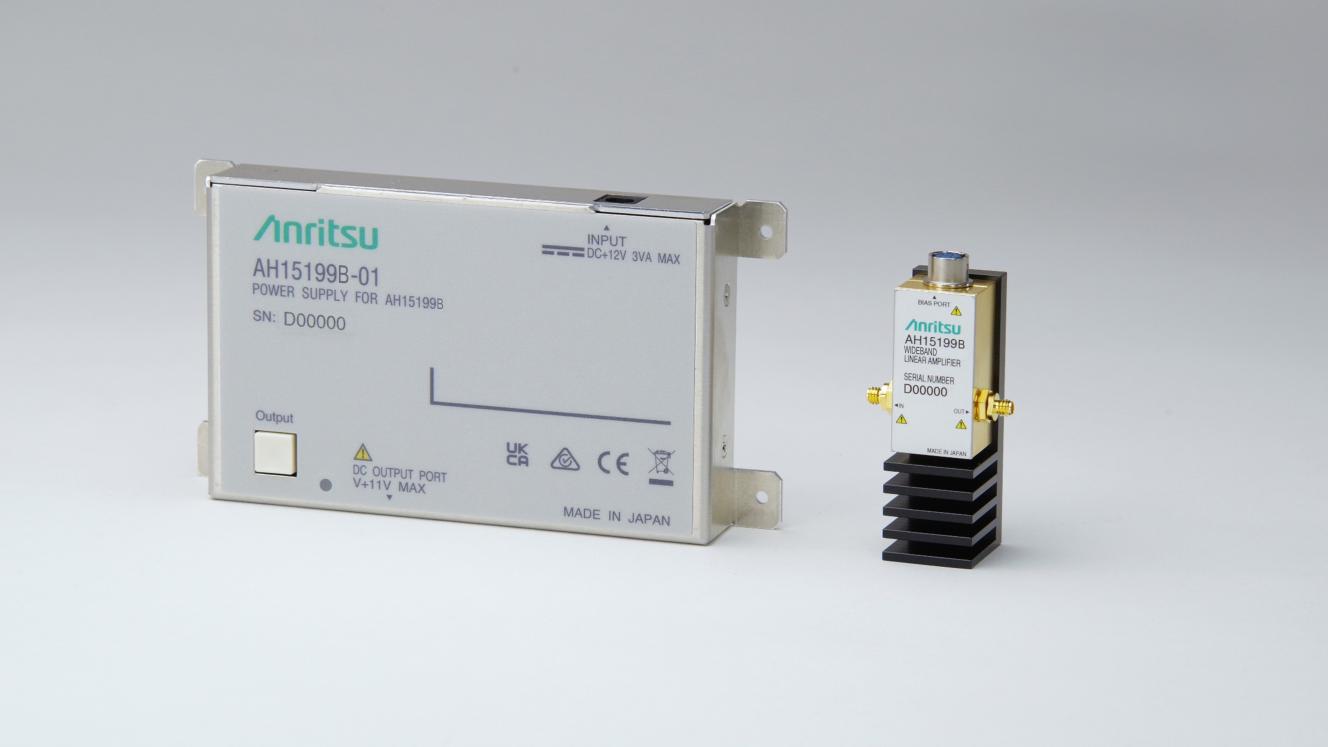Anritsu Corporation has launched the AH15199B linear amplifier with a wideband frequency response of 200-135 GHz at -6 dB bandwidth. It can amplify 140 Gbaud PAM4 signals to 2 Vpp.
Developed to evaluate optical transmission devices in the generation beyond 1 Terahertz, pulse amplitude modulation (PAM) increases transmission capacity using four voltage levels. High-gain amplification of +15.5 dB indicates how many times input frequency sinusoidal amplitude multiplies at output – plotted as frequency on the logarithmic x-axis and gain in dB relative units on the y-axis. Low jitter fluctuation of 300 fs from the actual signal timing also supports amplification of high-quality input signals attenuated during transmission.
The AH15199B can amplify 140 Gbaud PAM4 signals from various sources such as DSP (specialised microprocessor for processing digital signals generally used in real-time computing). It can directly drive modulators and other devices requiring high amplitude. Therefore, it is a suitable driver for evaluating optical modulators in 800 GbE and 1.6 TbE digital coherent data transmission methods using light phase and polarisation to transmit high-capacity signals over long distances.
Addressing signal degradation, this is a next-generation transmission system, which can be applied with the IM-DD method widely used in optical communication.
Development background
As mobile data traffic increases with the growth of AI, machine learning and other services so do the challenges in maintaining communication speeds for servers and network devices. The next-generation Ethernet standard IEEE802.3 supporting high-speed networks uses digital coherent methods such as 800GBASE-LR1 (for 10 km), 800GBASE-ER1-20 (for 20 km) and 800GBASE-ER1 (for 40 km) as well as the IM-DD method.
The Optical Internetworking Forum is studying specifications for optical transmission technologies (such as 800ZR, 1600ZR and coherent technology) to support increased optical network capacity and accelerate growth of “beyond 1 Terahertz” systems.
Higher transmission speeds suffer larger signal attenuation, so a high-power linear driver is needed to amplify PAM signals faithfully and drive modulators directly.














